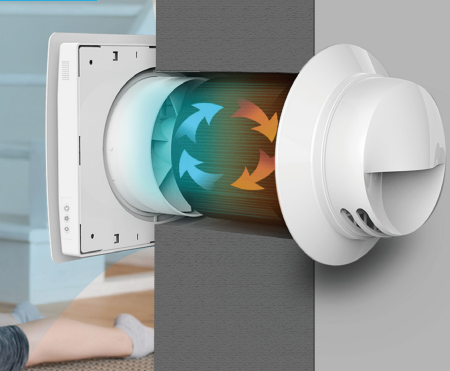Is HRV Worth It? Pros and Cons
Wiki Article
The All-Inclusive Overview to the Uses of Heat Recovery Ventilation in Modern Buildings
Heat Recovery Ventilation (HRV) systems stand for a substantial advancement in building modern technology (HRV Heat Recovery Ventilation). They offer an approach for exchanging stale indoor air with fresh outdoor air while decreasing power loss. This strategy not only boosts interior air top quality yet additionally adds to power efficiency in both property and commercial structures. Understanding the numerous applications and benefits of HRV can disclose its crucial function in contemporary design and sustainability efforts. The effects of this innovation deserve discovering furtherRecognizing Heat Recovery Ventilation Systems

Although numerous modern-day buildings focus on energy efficiency, comprehending warm healing air flow (HRV) systems is important for optimizing interior air quality and decreasing energy intake. HRV systems work by transferring warm from stagnant interior air to incoming fresh air, successfully preserving comfortable interior temperatures while minimizing energy loss. These systems consist of a warm exchanger, fans, and ductwork that promote the blood circulation of air. During winter months, HRV systems record and recycle warmth from the outward bound air, while in summer, they can help cool down inbound air. By continually exchanging air, HRV systems additionally minimize moisture and the focus of interior toxins. Correct installation and upkeep of HRV systems are vital for their effectiveness and efficiency in boosting general building efficiency and comfort.
Benefits of Heat Recovery Ventilation
Heat recovery ventilation systems supply countless benefits that boost both energy efficiency and indoor air quality in contemporary structures. By capturing and recycling energy from exhaust air, these systems greatly decrease cooling and heating costs, leading to lower power usage. They keep a consistent circulation of fresh outside air, lessening the risk of interior air contaminants and irritants. This constant exchange aids regulate moisture degrees, protecting against mold growth and guaranteeing a much healthier living environment. Additionally, HRV systems add to sustainability objectives by lowering general carbon impacts. Their capability to maximize air flow without giving up thermal convenience makes them an important addition to contemporary structure layout, advertising both financial and ecological advantages.Applications of HRV in Residential Structures
As property owners increasingly focus on energy performance and interior air quality, the applications of heat recuperation air flow (HRV) systems in residential buildings have actually become a lot more widespread. HRV systems are especially useful in snugly sealed homes, where keeping fresh air circulation is necessary for protecting against moisture buildup and indoor contaminants. They effectively transfer warmth from outward bound stale air to incoming fresh air, lowering power costs related to heating & cooling. Additionally, HRVs can boost convenience degrees by regulating moisture and temperature. They are likewise versatile for numerous household designs, consisting of single-family homes and multi-unit buildings. In general, incorporating HRV systems supports sustainable living practices while making certain a much healthier indoor setting for owners.HRV in Business and Industrial Settings
In commercial and industrial setups, the implementation of heat recovery ventilation (HRV) systems has actually come to be progressively vital for enhancing power performance and maintaining air top quality. These systems properly transfer warm from exhaust air to incoming fresh air, minimizing the demand for additional home heating or air conditioning. This not only reduces power find more information prices however additionally contributes to sustainability campaigns. Industries such as manufacturing, warehousing, and office complex profit significantly from HRV systems, as they aid control temperature and humidity levels, making certain a comfortable and productive setting. Moreover, HRV systems aid in eliminating contaminants and excess wetness, improving indoor air high quality. As regulations around air high quality end up being stricter, the adoption of HRV technology is most likely to expand, making it a vital element of modern commercial and commercial facilities.Future Fads in Heat Recovery Ventilation Technology

Regularly Asked Inquiries
Just How Does Heat Recovery Ventilation Influence Indoor Air Quality?
Heat recovery ventilation significantly improves interior air high quality by continuously exchanging stale indoor air with fresh exterior air while recuperating energy. This process lowers contaminants, maintains perfect humidity degrees, and ensures a much healthier environment for residents.Can HRV Systems Be Mounted in Existing Structures?
HRV systems can undoubtedly be set up in existing structures. Retrofitting may require adjustments to ductwork and air flow designs, but it substantially enhances power effectiveness Continue and indoor air high quality, making it a feasible alternative for older frameworks.What Upkeep Is Needed for HRV Equipments?

Are There Specific Climates Where HRV Is More Efficient?
Heat recovery ventilation systems are especially effective in environments with substantial temperature differences in between periods. These systems maximize power efficiency by recuperating warm from exhaust air, making them ideal for both chilly and moderately warm settings.Just How Do HRV Solutions Affect Energy Bills?

Report this wiki page